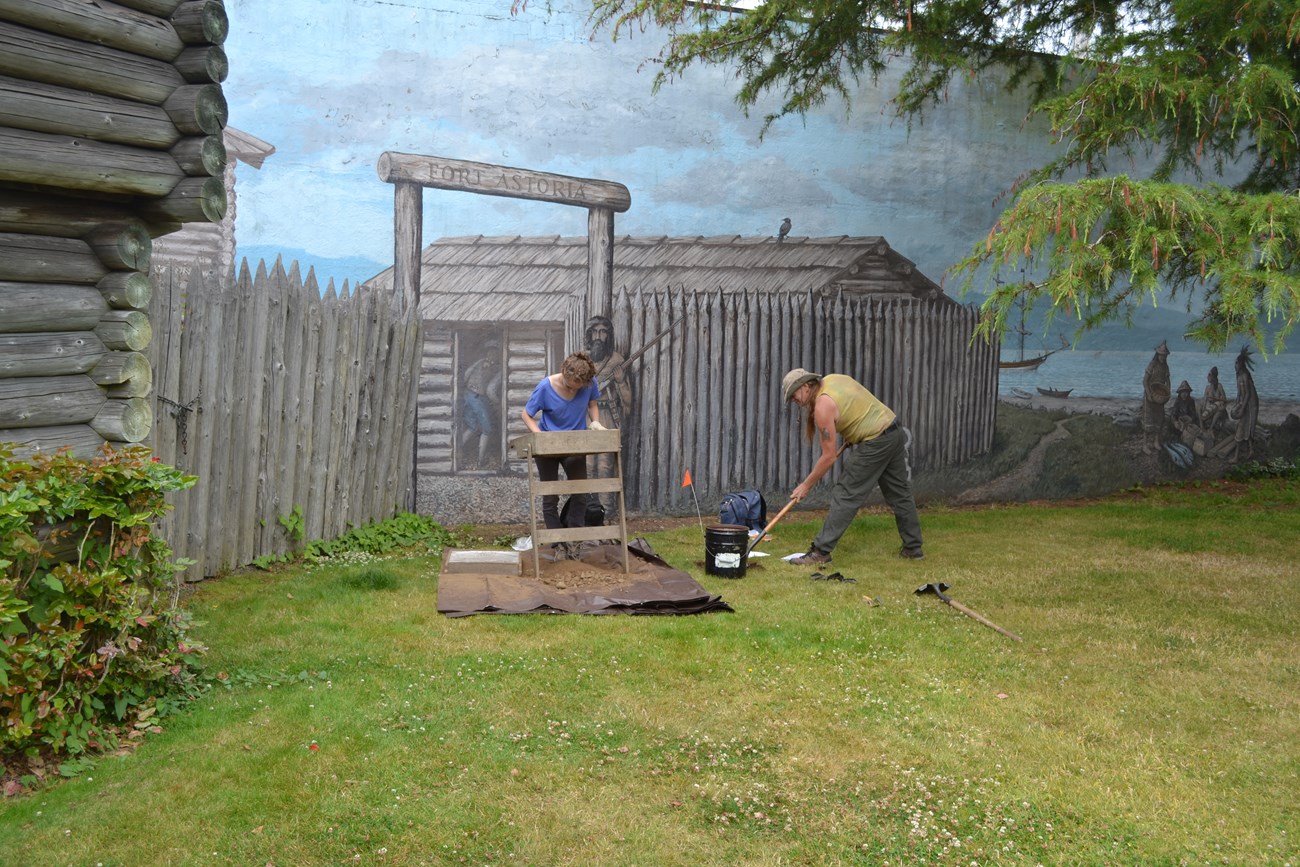Last updated: February 28, 2024
Article
First Archaeological Investigations of Fort Astoria

NPS
Between July 31 and August 4, 2012, National Park Service archaeologists joined with students and staff from Portland State University and Washington State University Vancouver to study the archaeology of one of the oldest colonial fort sites in the Pacific Northwest. Assisted by the City of Astoria and staff from Fort Vancouver National Historic Site and Lewis and Clark National Historical Park, they excavated in three locations associated with Fort Astoria/Fort George, a historic fur trade fort that operated between 1811 and 1848. In 2020, at the request of the City of Astoria , the regional National Historic Landmark (NHL) program published the field school report, detailing the three archaeological sites. This effort documented the material evidence of the influential fur trade emporium and makes recommendations on updating NHL documentation for the fort.
Excavations at Fort Astoria Memorial Park resulted in the discovery of many artifacts that date to the colonial fur trade at Fort Astoria (which was renamed Fort George in 1813). The archaeologists also found 19th and 20th century artifacts and features associated with more recent city dwellings that were placed on the site after the fort was abandoned. The presence and abundance of these fur trade items suggest that there are important archaeological resources present that archaeologists could use to explore the materiality of the fur trade in the Pacific Northwest. Since very few “tests” (preliminary excavations to establish extent of artifacts) have been conducted at these forts, there is speculation that additional features and structures, such as trenches, trash pits, and structural footings, could still be present.
The abundance of fur trade-era artifacts provides additional documentation of the materiality of the fur trade fort and helps to confirm its location. The importance of Fort Astoria is reflected in its listing as a National Historic Landmark, primarily through its connections to indigenous and settler colonial history. The extant evidence suggests that the Fort Astoria artifacts cannot be easily separated from the later Fort George artifacts. While the Fort George portion of the site is not significant under the National Historic Landmark criteria, the fur trade items provide additional information on the Landmark’s historic integrity.
Uncovering significant material remains of the forts is an exciting discovery for archaeologists. Additional site visits are recommended to further explore the extent of the original fort’s remaining physical features. Such work will help not only update the NHL documentation but would help add new understanding of the colonial period in the West overall, including the story of indigenous and settler interactions and the development of Astoria, Oregon.
